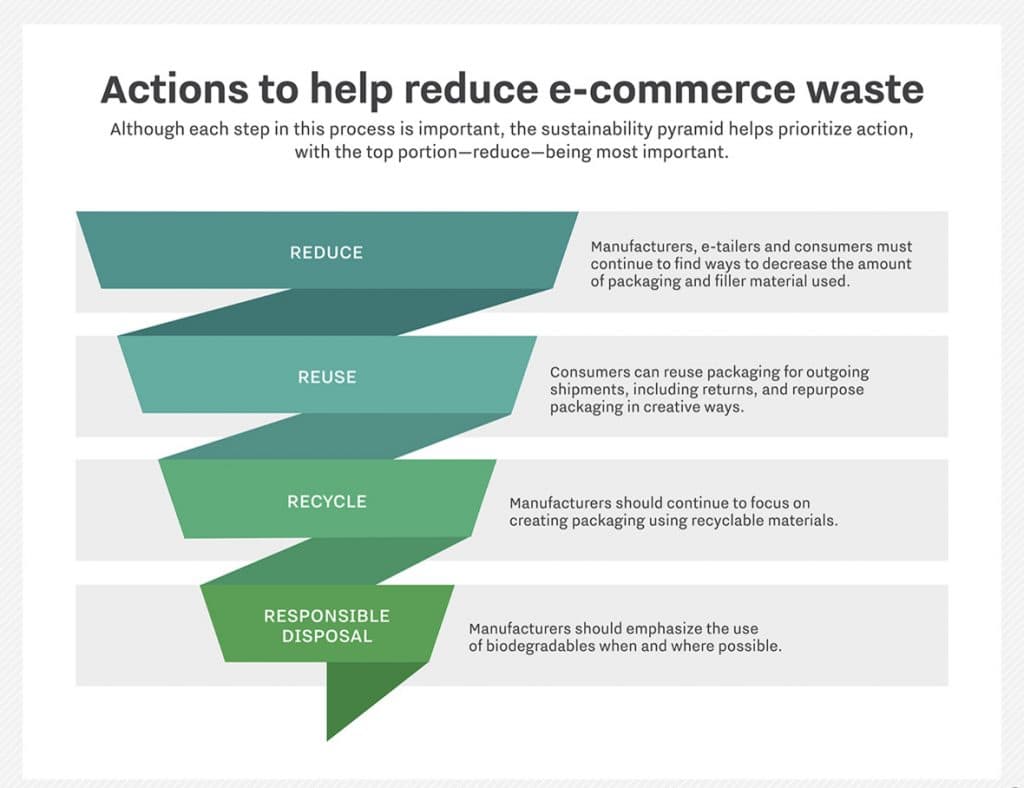These days, customers are doing a lot of their shopping from home, but that ease comes with a cost. One issue: E-commerce packaging is well on its way to becoming a problematic waste issue.

Most businesses in manufacturing, distribution and retail do a really good job of recycling packaging material. Nearly all collect used corrugated boxes, bundle them together and get them to a recycler on a regular basis.
But as more and more products are now being shipped direct to consumers, more packaging material is required, and more of it is ending up in the household waste stream. Consumers only recycle a small percentage of the packaging material that brings those e-commerce purchases to their doorsteps, so the environment is taking a double hit — more packaging in the supply stream and less of it being recycled.
Those ubiquitous brown corrugated cardboard boxes are mostly made from recycled material, and the boxes themselves are recyclable, but the recycling circuit is interrupted when the cartons are stacked up in the consumer’s garage, attic, cellar or, worse yet, simply tossed into the trash.
And there may be a bigger problem. Smaller shipments like those that are typical for direct-to-consumer sales require more padding or filler to protect the contents as they travel through a longer supply chain with more handling of the cartons.
Products that are typically shipped in cases and pallets of goods from the supplier to the retailer are designed for efficient packaging and don’t require much, if any, filler. Different-sized individual items put into a box by an e-tailer often require more filler. Much of the plastic foam, packing peanuts, organic fiber material and other e-commerce packaging ends up in the landfill. Switching from plastic to biodegradable organics is certainly a step in the right direction, but only a small step.
Let’s look at the sustainability pyramid for help in prioritizing actions: Manufacturers, e-tailers and consumers must continue to find ways to decrease the amount of packaging and filler material used. Consumers can reuse packaging for their outgoing shipments, including returns to the supplier, storage in the home and other creative uses that keep the materials out of the waste stream. Producers should continue the transition to recyclable materials, if they haven’t already, to satisfy the recycle portion of the process, and should emphasize the use of biodegradables when and where possible.
To read the full story, visit http://searcherp.techtarget.com/answer/How-is-e-commerce-packaging-creating-a-waste-issue.
